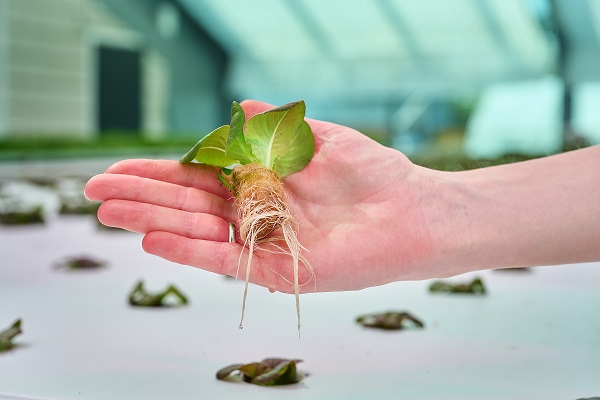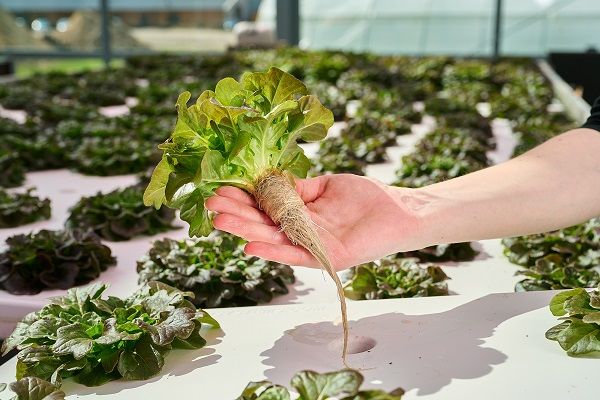Klasmann-Deilmann: The Magic of Innovation
 Klasmann-Deilmann will showcase its latest introductions in booth 812 during the March 11-12, 2024 edition of Indoor Ag-Con. The focus will be on the presentation of a genuine innovation for modern horticulture: Nygaia. Nygaia is a substrate based on biopolymer technology that is biodegradable and is particularly suitable for use in hydroponic systems.
Klasmann-Deilmann will showcase its latest introductions in booth 812 during the March 11-12, 2024 edition of Indoor Ag-Con. The focus will be on the presentation of a genuine innovation for modern horticulture: Nygaia. Nygaia is a substrate based on biopolymer technology that is biodegradable and is particularly suitable for use in hydroponic systems.
Under the theme “The magic of innovation,” the completely newly developed product will be presented to a wide audience. In addition to theoretical information – which will be communicated at the trade fair booth – the product will also be brought to life for trade fair visitors on site.
Be it with test kits, which will be distributed to interested guests at the booth. Or with the appearance of Rob Anderson. The magician has been seen on Good Morning America, Today, and Comedy Central performing his impressive feats of sleight-of-hand and mind-reading. Rob will be making an appearance during Ag-Con exclusively at the Klasmann-Deilmann booth and during the welcome cocktail reception on the expo floor.
And when even the President of MTV Networks says about Rob ” … I know how rare it is to come upon a talent like him.”, this live event is definitely not to be missed. The special performance is scheduled for March 11 , 2024 from 5:15 to 5:45 pm in the Expo Theater on the show floor during the opening day cocktail reception.
About Nygaia
 Nygaia is the substrate solution of the future that will soon be able to completely replace conventional substrates, e.g. in the cultivation of leafy vegetables in hydroponics and vertical cultivation systems. The innovative substrate fibre consists of 60% natural, bio-based raw materials and is completely biodegradable.
Nygaia is the substrate solution of the future that will soon be able to completely replace conventional substrates, e.g. in the cultivation of leafy vegetables in hydroponics and vertical cultivation systems. The innovative substrate fibre consists of 60% natural, bio-based raw materials and is completely biodegradable.
 This means it produces neither waste nor microplastics. The Nygaia substrate fibre for hydroponics is inert, salt-free and provides a perfect water retention capacity. It also offers very good air capacity, which optimally supports healthy root growth of plants. Nygaia is a product development of the close collaboration of Klasmann-Deilmann and Maan Biobased Products.
This means it produces neither waste nor microplastics. The Nygaia substrate fibre for hydroponics is inert, salt-free and provides a perfect water retention capacity. It also offers very good air capacity, which optimally supports healthy root growth of plants. Nygaia is a product development of the close collaboration of Klasmann-Deilmann and Maan Biobased Products.
Innovation in plant propagation: The GROWCOON
In addition to Nygaia, Klasmann-Deilmann will also showcase Growcoon, a fully biodegradable propagation plug based on polymer technology with a stable but flexible open net structure. It forms a stable root ball when used in combination with a high-quality seedling substrate. Therefore, Growcoon is the optimal system for all types of propagation methods such as sowing, rooting of cuttings, grafting but proves to be particularly effective in vertical farming and hydroponic systems.
The Growcoon is available in many different standard sizes and suitable for all common tray sizes and can be used in all established propagation systems and with different trays and any loose fill substrate. Moreover, Growcoon is a solution for pot-free cultivation, which can significantly reduce the use of plastic. For this, Growcoon is also available in larger dimensions and suitable for growing bedding plants, perennials, or pot herbs in small pots. Growcoon is a product developed within the close collaboration of Klasmann-Deilmann and Maan Biobased Products.
About Klasmann-Deilmann
Klasmann-Deilmann is the leading corporate group in the international substrate industry, with numerous sales and production companies in Europe, Asia and America, and a network of sales and production partners on every continent. Our growing media provide worldwide a vital basis for the growth of soft fruit, vegetables, edible mushrooms, herbs, ornamental plants, trees and shrubs. They help ensure the success of our partners and customers in the commercial horticulture sector and are an integral part of the food sector value chain.
The strategic focus of our company, a medium-sized family business, is extremely forward-looking. Keen to remain the most successful and sustainable producer of growing media, we are single-mindedly building on the lead we have in the development and use of renewable resources, ground-breaking substrate blends and innovative solutions for commercial horticulture. Our ADVANCED substrates as well as Growcoon, Nygaia and the Growbag ADVANCED are the latest examples of our sustainable, innovative growing solutions.
Learn more about Klassmann-Deilmann.
